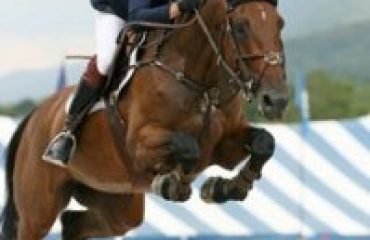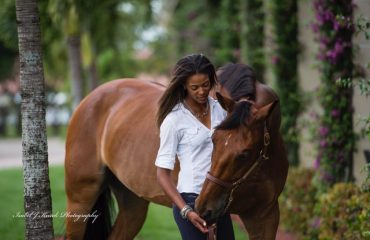By George Williams
Normally, 2021 would have been the year of “the calm before the storm.” It would have been a year of recuperation not just for our elite dressage horses, but also a year of recovery for the dedicated dressage staff that puts it all together. However, with the Olympics being delayed one year due to COVID-19, there is in fact little time to catch our breath before we go into the 2022 ECCO FEI World Championships to be held in Herning, Denmark, August 6–14. Then in 2023, the Pan Am Games are scheduled for October 20–November 5 and will be in Santiago, Chile. Of course, there is no rest for the weary as this is followed by the 2024 Olympic Games in Paris.
Basically, 2022 will be the start of a whirlwind of major championships. Both the World Championships and the Pan Am Games will serve as a qualifier for countries to earn coveted spots in the Olympics. No pressure there.
First though, April 6–10 we will have the FEI World Cup Finals in Leipzig, Germany. Although it’s not an Olympic qualifier per se, it’s an important international testing ground for U.S. riders. Right after that, the preparation for the World Championships will really start to gear up and the pressure will be on to qualify for the 2024 Olympic Games in Paris.
In a last-minute decision last March, the FEI was forced to cancel the 2021 FEI World Cup Finals. This meant that the new qualifying system, which was adopted for the 2020-21 qualifying season, was not able to be really tested. What does that mean? It means that this year will be the first real test of the new system for qualifying within the World Cup North American League. The percentage system used for a number of years was a very straightforward system that simply used the percentages achieved by combinations in the qualifiers (CDIWs) for the FEI World Cup Finals to rank them in order of percentages received. It didn’t matter how many competitors you were competing against, all that mattered was the percentage that you achieved in the Grand Prix freestyle at the CDIW. This system assured that the highest-scoring combinations would thus be leading the ranking list for the FEI World Cup Finals.
The 2020-21 World Cup qualifying season saw the introduction of a new system to qualify. The new system is based on points. Points are earned by placings: For instance, in a CDIW where there are eight or more starters. the winner earns 20 points while second place earns 15 points, third 12, and so on down the line. If there are less than eight starters, then the points earned change and the winner would receive 13 points and second place 10; third 8; fourth 7; and so on. Between the new system and the use of the short Grand Prix at all CDIWs, I’m very interested to see how this plays out as there are definitely a few pluses and minuses to all of it.
While some of the top U.S. combinations may be trying out for the FEI World Cup Finals, most likely more of them will be trying out for the World Championships as it’s the true brass ring and the season has been compressed by COVID. As a result, it should make the U.S. CDIs very exciting to watch. As always, many of the hard-fought battles will take place at the Wellington, Florida, CDIs. Fortunately, we now have some new CDIs in California that should make the entire process more interesting and a little fairer for those who cannot travel across the country.
Did you know that there’s no guarantee that the U.S. will have a spot in the Olympics? As it has been in the past, the top six placing nations at the World Championships will qualify for the Olympics. This means that many countries will be fighting very hard for those coveted slots. If the U.S. does not place in the top six—something I don’t even want to think about—then their last chance will be at the Pan Am Games.
The World Championships in Herning will be very different than we’ve ever had before. Why? It will be a different model from what we’ve had in the past with the FEI World Equestrian Games (WEG). The first WEG was held in Stockholm July 24–August 5, 1990, with 37 nations participating in 13 events in six disciplines. By contrast, Tryon 2018, the eighth and final WEG, had 79 nations participating in 29 events in eight disciplines, with a total of 702 athletes participating. The first time the WEG was ever hosted outside of Europe was in 2010, which had 58 countries participating in 18 events in eight disciplines. Para-dressage was included for the first time in the Lexington WEG. Due to the ever-increasing size and unwieldly logistics, the FEI decided to allow organizers to apply for the World Championships by discipline. The organizers of Herning bid and were given approval for dressage, jumping, para-dressage and vaulting. Hello, World Championships; goodbye, World Equestrian Games.
I don’t know about you, but to me, six months from now is not a very long time. While it will go by in the blink of an eye, there’s no doubt that I will be holding my breath while keenly watching what happens at Herning!
Caption:
This year’s U.S. CDIs should be very exciting to watch, and many of the hard-fought battles will take place in Wellington, Florida.
Photo by Melissa Fuller













